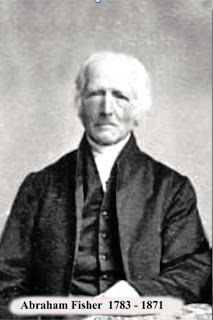My childhood - by Mary O’Donnell of Laurach, Milford
I was given this story by Mike Hackett, Author and Historian based in Youghal. Mike has kindly passed on a number of interesting articles to me over the years. I thought this might prove interesting to those of you who have emigrated over the years to various parts of the world.and indeed to those of you at home who have been loyal to this Blog since I started posting.
Photo was taken in 1946 , standing is Mike's dad Michael Hackett,with wife and author of the story, Mary, Sean O’Donnell & Mike Hackett, Author and Historian as a baby of two years old!
'One of the earliest incidents concerned the dreaded ‘Black and Tans’. They walked into the farmyard one day with the sole purpose of doing ‘devilment’ and taking what they could, by way of food and animals from the poor people. I was only a couple of years old and have no good memory of it, but it was spoken of so much for years afterwards that I have a

clear recollection. The officer in charge saw the workhorse looking over the door of the outhouse and ran to take him out and away. My father, Michael, was out in the fields and so my mother, Mary, was on her own with a flock of frightened children around her. The horse was the centre of the farm; used for every job on the land and if he were taken, the outlook for the family would be very bleak. The officer caught the horse at one side but my mother was just as quick and grabbed him at the other side. A tug of war ensued for a few minutes with my mother getting desperately cross, while all the children were upset and crying. In the end, the officer gave up, the Black and Tans walked out, and the horse was saved.
 Left, Mike a little older
Left, Mike a little older Back in those days, our farm was supporting as many (at one stage) as twelve children with the parents. But hard-working people provided well and we had our own hens, ducks, geese and turkeys. We killed our own pig twice a year and the bacon would be hanging over the fireplace and along the rafters. There was no shortage of milk, butter-milk and country butter. Potatoes and other vegetables were grown in abundance and the orchard gave all the different fruits like apples, red and black currants, gooseberries and rhubarb. When we sat down to dinner, the huge black pot of potatoes would be taken off the crane (over the fire), strained, and then tumbled onto a linen flour bag on the huge table in the middle of the large kitchen. Imagine then fourteen hands reaching out for a ‘pratie’, and again fourteen hands reaching for another ‘pratie’. With bacon and cabbage, milk and country butter, short work would be made of that pot of spuds.
When Alice Taylor wrote her first book ‘To School through the Fields’, it brought back a lot of memories to me. We too went to school through the fields, particularly in the Spring and Summer. The local farmers had stiles on every ditch to make it easier for small legs and the only danger was to watch for the bull. From Laurach to the school, by road, was about two miles, but it was halved by going across the fields.
We had a lovely teacher named Mrs. Broderick and she did her best for us in bad times. On a cold day, she would put us around the fire, the only source of heat, where she would read to us. The teacher had a little question-time one day when she asked all the pupils to name an animal. One very small girl replied ‘A worm, Miss’. Mrs. Broderick was very patient and encouraging and asked again ‘Another animal please’. The little girl answered ’Another worm Miss’. I remember being obsessed, while in that semi-circle, with counting the toes of the poor children without shoes (even in Winter time). But we knew no other way! We played like any children: running, jumping and hiding, and we were very happy. Another memory comes to me of young boys, at Kilbolane, throwing stones with string up into the old trees in an effort to break off twigs for the fire at home.
In my early twenties, I joined the (then well-known) firm of P and J Ryan’s, grocers of Charleville. They had shops in a lot of County Cork Towns and I was sent to Youghal. The job was a live-in one and we stayed overhead the shop. The work was hard as the goods arrived in bulk: sugar in sacks; tea in tea-chests; pigs whole and entire. The sugar and tea were put into small brown paper bags and the pigs had to be sliced into rashers etc. Despite all the hard work, we country girls, managed to keep an eye on the men we encountered and I met my husband, Michael Hackett. That was the end of my cutting-up pigs for P and J Ryan and I spent the rest of my life in Youghal by the seaside.
Thinking back to Milford and my childhood, it can be summed up in saying ‘Hard and Happy Times’.'
Mary Hackett (nee O’Donnell of Laurach, Milford).
 Máire Connery (Meehan) & her husband, The late John Connery
Máire Connery (Meehan) & her husband, The late John Connery


 Liam Ó Miadacáin, pictured when he first came to Dungarvan, in memorial of 1916
Liam Ó Miadacáin, pictured when he first came to Dungarvan, in memorial of 1916








